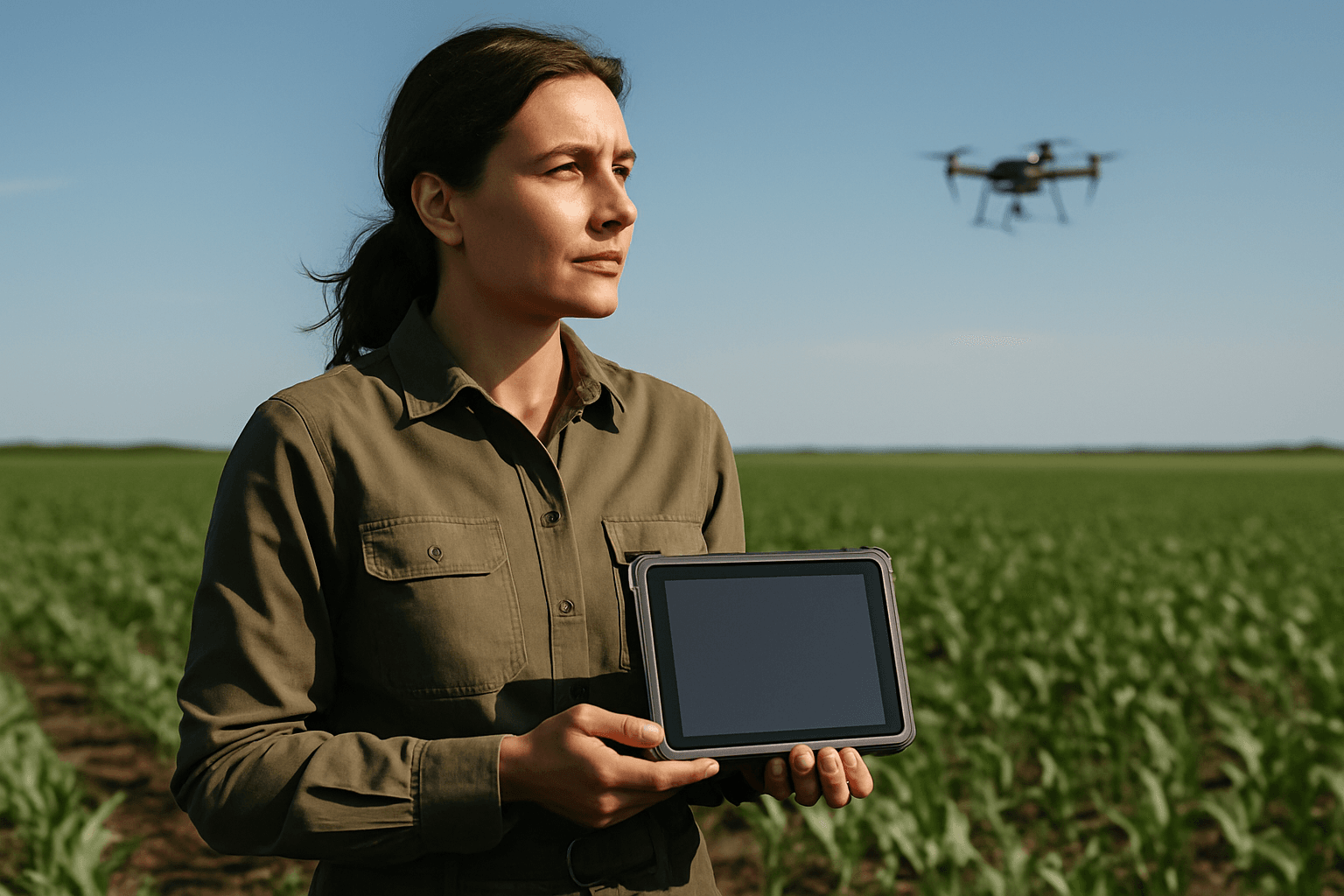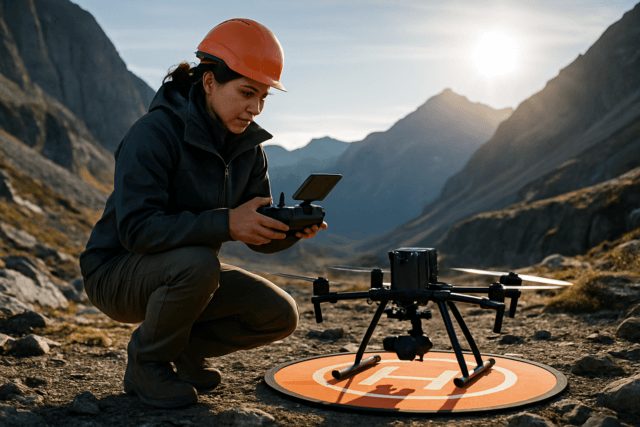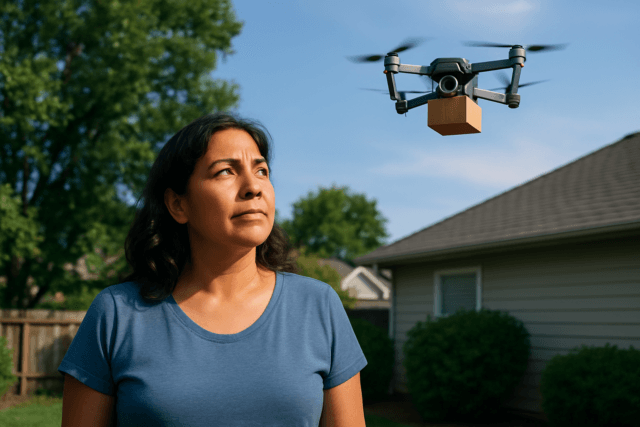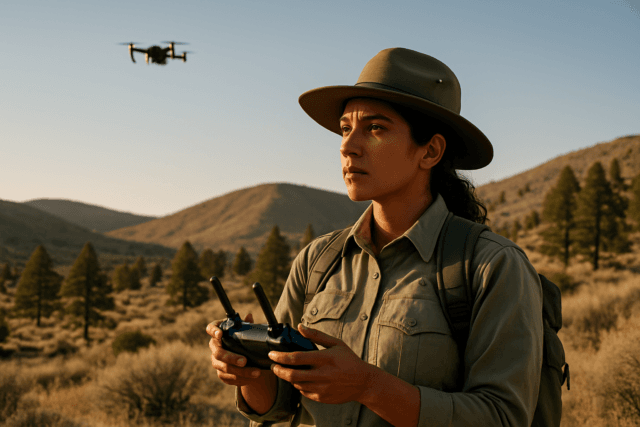The agricultural sector is undergoing a significant transformation, driven by advancements in technology. Among these innovations, drones, or Unmanned Aerial Vehicles (UAVs), have emerged as powerful tools, redefining precision agriculture and offering unprecedented opportunities to enhance productivity, optimize resource utilization, and improve decision-making processes. For farmers considering integrating this technology, a thorough cost-benefit analysis (CBA) is essential to determine the financial viability and strategic advantages of drone implementation. This analysis helps farmers understand the potential return on investment (ROI) and ensures that the investment aligns with their operational goals for profitability and sustainability.
Understanding the Role of Drones in Modern Agriculture
Drones in agriculture provide real-time, high-resolution imagery and data, allowing farmers to monitor crop and livestock conditions more extensively and with greater detail than traditional methods. They facilitate a data-driven approach to farming, supporting various applications from aerial surveying to precision application of inputs. This shift from broad-scale strategies to meticulous observation and adaptation is at the core of precision agriculture.
Identifying the Costs of Drone Implementation
Implementing drone technology in farming involves several cost categories, from initial investment to ongoing operational expenses. A comprehensive CBA must account for all these factors to provide an accurate financial picture.
Initial Investment Costs
The upfront expense is a primary consideration for farmers. This includes:
- Drone Hardware: The price of agricultural drones can vary significantly, ranging from approximately $1,000 for basic models to over $50,000 for high-performance units equipped with advanced sensors and robust capabilities suitable for large-scale operations. Factors influencing cost include drone type (fixed-wing for large areas, multi-rotor for precision), camera quality, and sensor capabilities (e.g., thermal, multispectral imaging).
- Accessories: This encompasses essential items like extra batteries, charging stations, and carrying cases.
- Software and Data Analytics Platforms: Advanced platforms for cloud storage, automated flight path planning, and data analysis are crucial for translating raw drone data into actionable insights. Subscription and licensing fees for such software can range from $500 to $2,000 per month.
- Training and Certification: Operating agricultural drones often requires skilled operators and remote pilot certification, which incurs personnel and training expenses, potentially accounting for 15-20% of the overall budget.
Operational and Maintenance Costs
Beyond the initial purchase, ongoing costs are vital to consider:
- Maintenance and Repairs: While drones may require less maintenance than some other agricultural equipment, batteries wear out and need replacement. General maintenance and repair expenses should be factored into the budget.
- Insurance and Licensing: Like any other significant asset, drones may require insurance, and regulatory compliance might involve licensing fees.
- Personnel Time: Even with automation, staff time is needed for operating the drone, managing flights, and analyzing the collected data.
- Data Processing and Storage: The large volumes of aerial data generated by drones necessitate robust data processing and storage solutions, often involving cloud services that can cost around $500 per month.
Identifying the Benefits of Drone Implementation
The advantages of integrating drone technology into farming operations are extensive and can significantly impact a farm’s efficiency, productivity, and environmental footprint.
Enhanced Crop Monitoring and Health Assessment
Drones equipped with multispectral and thermal cameras can provide high-resolution imagery and data, enabling early detection of issues like pest infestations, diseases, and irrigation problems long before they escalate or become visible to the human eye. This improved remote sensing allows for timely decision-making and more accurate pinpointing of stress areas.
Precision Application of Inputs
One of the most significant benefits is the ability to apply fertilizers, pesticides, and herbicides with pinpoint accuracy. This targeted approach reduces chemical waste, lowers input costs, and minimizes environmental impact by decreasing agricultural runoff and chemical drift.
Increased Efficiency and Time Savings
Drones can cover vast areas of farmland in a fraction of the time it would take for manual scouting or traditional methods. This automation reduces the need for extensive manual labor, freeing up personnel for other critical tasks and streamlining farm management.
Improved Data-Driven Decision Making
The detailed data collected by drones, combined with agricultural analytics and yield mapping technologies, offers farmers a clearer picture of crop growth, health, and soil moisture. This data-driven approach leads to better planning, efficient resource management, and ultimately, more informed decisions that optimize farm operations.
Yield Optimization
By enabling early detection and targeted interventions, drones directly contribute to safeguarding crop health and productivity, leading to increased crop yields. Some reports suggest that precision agriculture technologies, including drones, can increase crop yields by up to 20%.
Environmental Stewardship
Drones promote sustainable agriculture by reducing the overuse of water, fertilizers, and pesticides, which helps protect ecosystems and biodiversity. Optimized irrigation schedules, based on drone-collected soil moisture data, prevent water wastage. Using drones for spot treatments instead of full-field spraying can also decrease air-polluting emissions.
Other Applications
Drones also offer benefits in livestock monitoring (tracking health, behavior, and location) and detailed land surveying, including topographic mapping and volume calculations.
Quantifying the Cost-Benefit Analysis
To perform a robust CBA, it’s crucial to quantify both the costs and benefits into monetary terms where possible. The most common metrics used are Return on Investment (ROI) and Net Present Value (NPV).
Calculating Return on Investment (ROI)
ROI measures the profitability gained from using drones compared to the initial and ongoing costs. It’s calculated as:
ROI = (Total Benefits – Total Costs) / Total Costs
To calculate this, you need to:
- Monetize Benefits: Estimate the monetary value of increased yields, reduced input costs (fertilizers, pesticides, water), savings from reduced labor, and efficiency gains. For instance, a 20% increase in yield or a 30% reduction in pesticide use can be translated into monetary savings or increased revenue.
- Sum All Costs: Add up all initial investment and operational costs over a specified period (e.g., annually or over five years).
- Determine Payback Period: This indicates the time required to recover the initial investment through accumulated savings and increased revenue. Some operators report recovering drone costs in as little as 4-6 weeks, particularly for spray drones.
Net Present Value (NPV) Analysis
NPV is a capital budgeting technique that accounts for the time value of money. It involves discounting future cash flows (benefits and costs) back to their present value to determine the overall profitability of the investment. A positive NPV suggests that the drone implementation is expected to be profitable. This analysis is particularly useful for longer-term investments and helps compare different investment opportunities by considering the present worth of future gains.
Real-World Examples and Cost-Efficiency
Studies and anecdotal evidence highlight the economic advantages. For example, some farmers have reported a 20% increase in yield and a 30% reduction in pesticide use after adopting agricultural drones. The cost per acre for drone applications can be competitive, with some analyses showing figures around $12.27 per acre, which can decrease further with increased acreage.
Key Factors to Consider for Successful Implementation
Beyond the financial calculations, several practical considerations influence the success and ROI of drone implementation:
- Farm Size and Type of Crops: Drones are generally more cost-effective for larger farms where manual monitoring is highly time-consuming. Certain crops that require frequent monitoring or precision fertilization also benefit more.
- Specific Needs and Services: The type of drone and services required should align with the farm’s particular needs, whether it’s crop scouting, health mapping, spraying, or livestock monitoring.
- Scalability: It is often recommended to start with a basic drone model to gain experience and then scale up to more advanced systems as comfort and benefits become evident.
- Integration with Existing Systems: Look for drone solutions and software that can integrate seamlessly with existing farm management tools for a cohesive approach.
- Government Support and Subsidies: Farmers should research any available government policies or subsidies that encourage the adoption of drone technology, as these can significantly reduce the financial burden.
- Choosing a Reputable Provider: If opting for drone services rather than outright ownership, selecting a reliable provider that delivers consistent, accurate, and timely data is crucial.
Conclusion
Developing a comprehensive cost-benefit analysis for drone implementation in farming is a critical step for any agricultural operation looking to leverage this cutting-edge technology. While the initial investment and ongoing operational costs exist, the long-term benefits in terms of enhanced crop monitoring, precision input application, increased efficiency, improved decision-making, yield optimization, and environmental sustainability often far outweigh these expenses. By meticulously quantifying both costs and benefits and considering key operational factors, farmers can make informed decisions that pave the way for a more productive, profitable, and sustainable future in agriculture.





